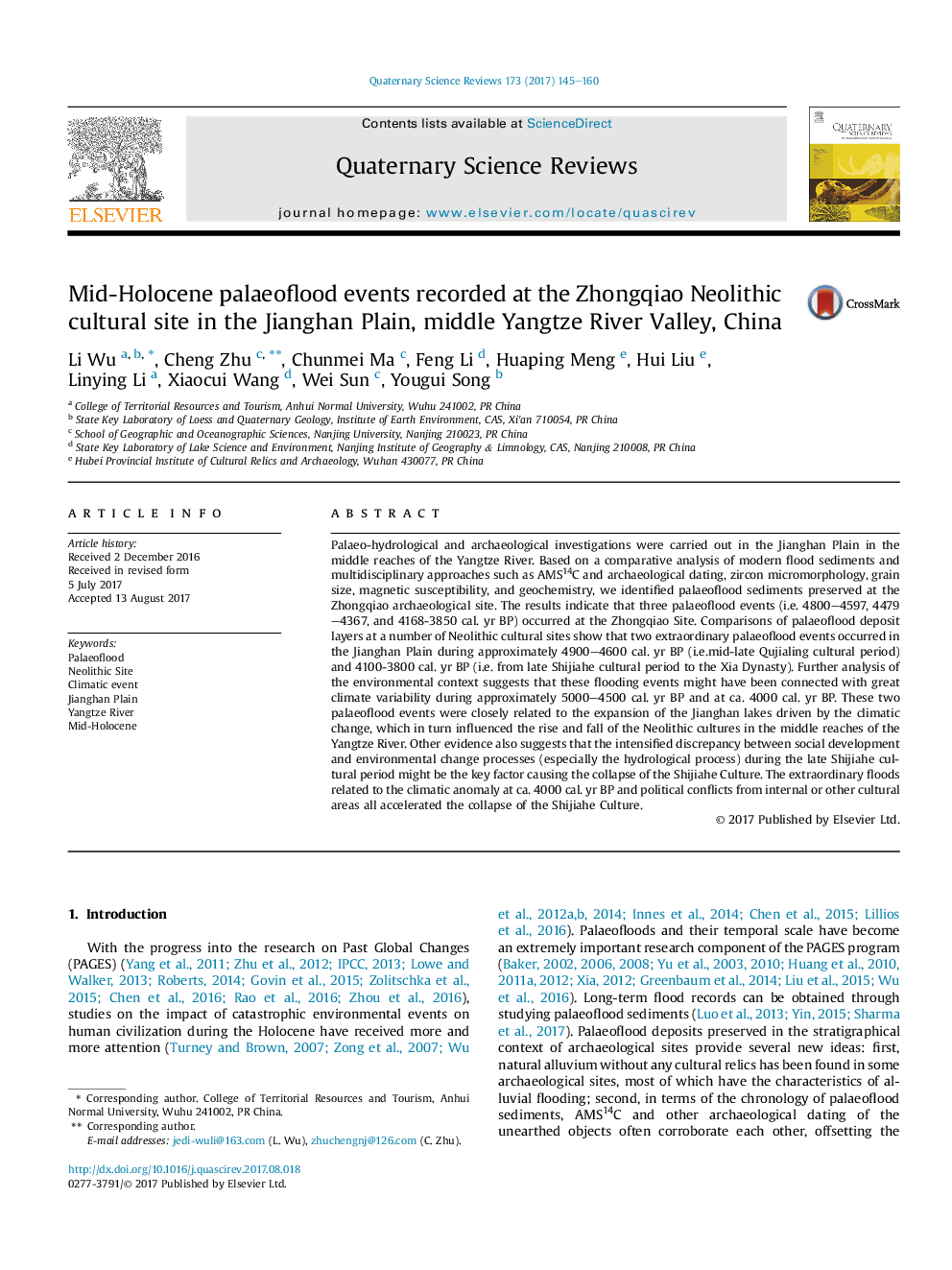| Article ID | Journal | Published Year | Pages | File Type |
|---|---|---|---|---|
| 5786512 | Quaternary Science Reviews | 2017 | 16 Pages |
Abstract
Palaeo-hydrological and archaeological investigations were carried out in the Jianghan Plain in the middle reaches of the Yangtze River. Based on a comparative analysis of modern flood sediments and multidisciplinary approaches such as AMS14C and archaeological dating, zircon micromorphology, grain size, magnetic susceptibility, and geochemistry, we identified palaeoflood sediments preserved at the Zhongqiao archaeological site. The results indicate that three palaeoflood events (i.e. 4800-4597, 4479-4367, and 4168-3850 cal. yr BP) occurred at the Zhongqiao Site. Comparisons of palaeoflood deposit layers at a number of Neolithic cultural sites show that two extraordinary palaeoflood events occurred in the Jianghan Plain during approximately 4900-4600 cal. yr BP (i.e.mid-late Qujialing cultural period) and 4100-3800 cal. yr BP (i.e. from late Shijiahe cultural period to the Xia Dynasty). Further analysis of the environmental context suggests that these flooding events might have been connected with great climate variability during approximately 5000-4500 cal. yr BP and at ca. 4000 cal. yr BP. These two palaeoflood events were closely related to the expansion of the Jianghan lakes driven by the climatic change, which in turn influenced the rise and fall of the Neolithic cultures in the middle reaches of the Yangtze River. Other evidence also suggests that the intensified discrepancy between social development and environmental change processes (especially the hydrological process) during the late Shijiahe cultural period might be the key factor causing the collapse of the Shijiahe Culture. The extraordinary floods related to the climatic anomaly at ca. 4000 cal. yr BP and political conflicts from internal or other cultural areas all accelerated the collapse of the Shijiahe Culture.
Related Topics
Physical Sciences and Engineering
Earth and Planetary Sciences
Geology
Authors
Li Wu, Cheng Zhu, Chunmei Ma, Feng Li, Huaping Meng, Hui Liu, Linying Li, Xiaocui Wang, Wei Sun, Yougui Song,
